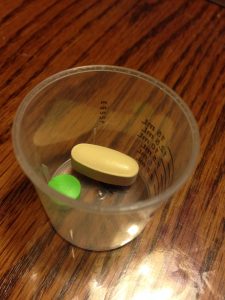Jan 13
Working together with my best friend since the 5th grade who is now a nurse practitioner, I developed this problem in which students have to use exponential decay (half life) to protect their patient from dangerous drug interactions.
Your patient has a fungal infection and is taking ketoconazole 400mg daily for 10 days. During this time they have been advised to stop taking their atorvastatin because of the potential for severe interaction. They may begin taking the atorvastatin again when the concentration of ketoconazole is at 12.5% of the original amount. The half life of ketoconazole is 8 hours.
How many hours after the last dose of ketoconazole can you patient resume taking the atorvastatin?

Jul 27
Here is a problem I have used in my algebra class. It uses knowledge of lines, functions, and extrapolation versus interpolation. (I find that in order for the students to be able to read the picture of the sign, I have to print it in color. Next time I go to the zoo I am going to try to get a better picture.)
The sign shown below from the Detroit Zoo gives various information about giraffes. Use the information from the sign to answer the following questions.

A) Write a function g(t) describing the height of a giraffe during its first year of life where t is the age of the giraffe in months.
B) How tall is a giraffe when it is one year old? Give your answer in a complete sentence with units.
C) Compute g(-1). Is this interpolation, reasonable extrapolation, or reckless extrapolation?

